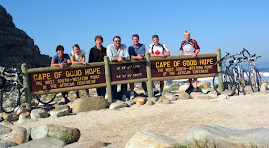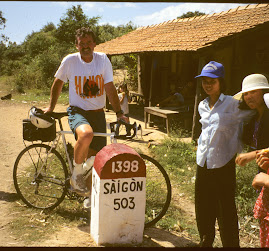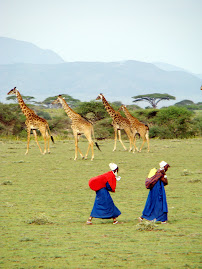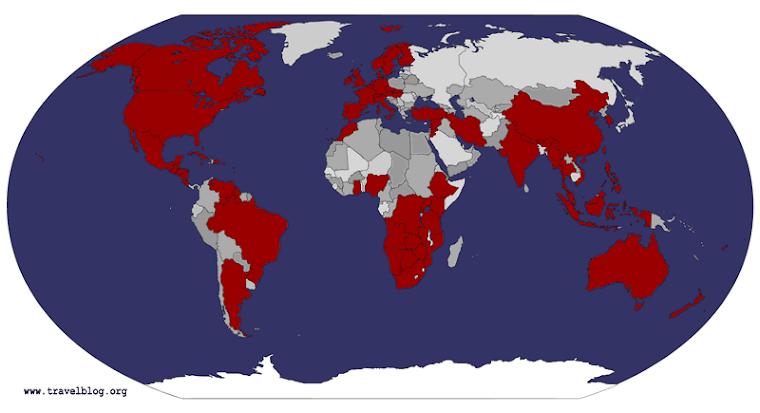BANGED UP IN BALI
It is the end of November.
There is a chill in the morning air, mist on the car, and the pundits are portending the fate of Canadian Airlines.
Canadian, Canada’s other carrier, the former CP Air, the former Pacific Western, Wardair, might go out of business, might not make it through January, through their next payroll, unless they get concessions from their majority shareholder, American Airlines, their unions, particularly Buzz H., their banks etc., etc.
The pundits are not encouraging. “If you have frequent flier points, you will lose them,” they cry. “Get insurance for them,” they counsel. “Use them as soon as you can,” they admonish.
Right, it’s the end of November, winter is just about here, and Christmas is right around the corner. Do we stay in Ottawa, visit some relatives in warmer climes, or try and save our Canadian points?
Based on the time it took to get through to an award agent, I was sure that everyone with Canadian points in Ottawa had the same idea.
“ As you can see from my account, I have accumulated a gazillion points that I might lose if you guys don’t get over this little problem you appear to have with deficits, negative cash flows etc. What is the furthest point in the Southern Hemisphere you can take us to on points for Christmas and New Year?”
“Australia?’ ‘New Zealand?”
No, been there. How about a tropical archipelago likes Indonesia?
“Canadian doesn’t fly there but we have a partnership with British Airways. They can fly you into Jakarta.”
“Perfect,” I said.
In less than ten minutes I had arranged two return flights to Indonesia, and covered them with my bounty of bonus miles.
We would fly to Jakarta, and then get a “Discover Indonesia” pass with Garuda, their national carrier. This would take us from Jakarta to Bali to Lombok to Sulawesi and back to Jakarta again, all at commuter prices.
We would take minimal luggage, trek through the lush tropical countryside, and dive in the azure seas of the Indonesian islands.
Never having been there, nor knowing any Canadians who had, though we knew it was a favorite playground of the Australians, we e-mailed some friends in that part of the world in the hope that might be able to offer some sage advice.
“Get to Bali as soon as you arrive in Jakarta, they advised. “Spend one night at Kuta Beach near the airport just to unwind, then rent yourselves a jeep and head into the interior.”
So, on a dark and cool evening in the middle of December we flew out of Ottawa, destination Bali. Thirty hours later, we had passed through Toronto, London, Kuala Lumpur and Jakarta, and we were exhausted as we carried our trekking gear and diving paraphernalia into the hotel at Kuta Beach. We slept the sleep of the dead for the next 11hours, before checking in at the concierge’s desk to inquire about a jeep.
“Suzuki, 22 United States dollars per day. You want?
“Insurance? What about insurance.”
“Covered for vehicle, but not for person.”
“OK,” I said, “we’ll take it, I have a travel policy in Canada that will look after any personal injuries.”
They brought the car to the hotel within the hour.
“Sign please.”
It was the rental agreement. Driver’s name, where staying, the daily rate, the return date, and six or seven conditions dealing with standard stuff like driving on the beach, off-road etc.
And then there was the standard third world insurance clause; “Vehicle is insured for all damage after $500.”
“This is a mistake,” I said. “We agreed that any and all damage to the vehicle would be covered. No deductible.”
A hurried conference was called. The people who brought the car and the concierge who had agreed to the original deal established a conference right there and then in front of us.
Their collective smiles confirmed we had a deal, but I went ahead and made the change to the document and then asked the agent to co-sign it with me.
“No problem.”
We had the car, an agreement, our trekking outfits and our diving gear.
We drove north to the town of Ubud, an artists’ colony, and checked into the Tjampuhan Hotel, a beautiful spot on the side of a ravine, with individual cottages furnished Balinese style, and management that seemed truly happy to have us as guests in their establishment. We decided that we would spend the rest of that day, our second on the island, wandering around Ubud, and the next day head up to Lake Batur and the volcano.
It was paradise. The locals were proud of their history, their culture and wanted to show it to appreciative audiences who were not there to compare. The only spot that catered to the type of tourist one would encounter stepping off coaches in Cancun was the Monkey Parks.
This was a hub of vegetation that housed a collection of sordid apes who had, over some considerable time, and with considerable practice, developed the ability to intimidate those who had paid money to do the very same thing to them.
The picture was a complete paradox. On the gate at the entrance a sign warned tourists not to bring food into the park, while on the other side of the entrance, local women were busy selling bananas to those who felt they were above the cautionary warnings. It was only when the apes starting tearing their packages, and even their clothes apart, to get their treats, that the tourists understood the point of the warnings.
From the Monkey Park we Jeeped the short distance to our second and last “must see,” the Temple.
The parking lot was bigger than the attraction itself. It was a cultural icon, and demanded the respect and conservatism that tourists with pink knees beneath bulging shorts didn’t satisfy; unless of course they rented a sarong rented by an enterprising father and son at the entrance. This was the first stop in the commercial gauntlet that proceeded to the ticket counter, and continued on to the “guides”, the souvenir stands and back to the Rent-a-sarong stand.
Even though the enterprising family had charged full pop to rent their sarongs for as long as it took to tour a half-acre cultural masterpiece, they still expected their return, so that they could be recycled and the cash compounded.
I enjoy seeing what countries view as their historical showcases, and while most of them from me a sort of ho-hum reaction, the peeling of the country’s onion is really not complete without seeing these treasures. However, the memories of such visits are probably the earliest to dim, and by the time I have returned to home base, most of them are forgotten.
By early afternoon, we were headed for Bali North far away from the tour buses with their “stay on the beaten track” passengers. We wanted to see the Gunung Batur volcano, and Bali Handara Kosaido, the island’s only golf club.
The Golf Club stood out like a football field in the Sahara; designed and constructed as only the Japanese can. Naturally, the people in the pro shop, in the restaurant and on the putting green, were all Japanese spending their weekend doing what they enjoyed best with their peers in what otherwise would be considered a “hardship post.”
We then headed for the north coast where a string of coastal villages have become collectively known as Lovina. It is much more laid back than the beach areas to the South and West, and the sell is not as hard either and the intensity of the harassment seems to wax and wane.
However, the beaches are black volcanic sand, not the nice white stuff, though it’s perfectly clean and just as nice to walk on.
Our travel guide, written for the “adventurous traveler”, recommended the Ciri Warung as the restaurant of choice for those who wanted the best of local fresh fish. And local it was. The menu of the day was showcased, item by item, in a series of glass bowls in a glass non-air-conditioned showcase. The process began with the selection of the item of choice, whereupon Le Chef removed the item from its bowl and placed it on a plate on a pile of white steamed rice. Even though the item was cold, the fact that the rice was hot and steamy gave the complete dish an acceptable temperature.
The tables were few and battle-scarred, and the utensils looked like they had been forged during the occupation, but despite this feeling that you had stepped into a Paul Theroux novel at lunchtime, the food was delicious, and memorable.
We stepped out of that establishment with burnt palates but very satisfied stomachs. Our friends from the buses were, no doubt, feasting on plastic-wrapped cheese and tomato sandwiches in some parking lot at the south end of the island.
It was three in the afternoon. It was starting to rain, and time to head back to Ubud, via the volcano. Before heading south we spotted a gas station, one of only five in the whole island outside of Denpasar. Filling up would be wise.
The rain was increasing in intensity, but it wasn’t a problem. We had already covered our outdoor itinerary, and the road around the volcano probably wouldn’t have many laybys for stopping and walking around. Besides, the only challenge when viewing volcanoes is to look into their craters from their summits, and we were certainly not going to climb this one.
Leaving town, we headed into the country. The volcano was imposing, and totally consumed the landscape around it. On the left it rose like a huge Behemoth, while the other side of the road dropped off into a long sloping descent.
The road was narrow; two lanes with a visibility of 100 meters at the most, and still the local drivers insisted on passing each other on blind corners. They would have to be careful today however, as it was raining, and the surface of the road was as slick and slippery as all roads in the tropics are following a rainfall.
We were passed again and again, on the short straightaways, on the blind corners, and waited for what we were sure was the inevitable sound of breaking glass and twisted metal. But each time, the gods smiled on those drivers, and passed them safely through.
Until.
We rounded one more corner, and then it happened.
A taxi minivan loaded with passengers was right in front of us, sideways, at a ninety-degree angle to their intended direction.
The only memory I have of that moment is of the three choices I was faced with in that split-second of time; swing the jeep left and smash into the volcano, swing the jeep right and head into the unknown, or face the music in front of us.
I had no idea what time it was when I fully realized what had happened. We were in the Emergency room at the main hospital in Denpasar, two hours away from where the accident occurred. We were both lying on gurneys next to each other, very silently taking in the sights and sounds around us. We were the only foreigners, the only tourists, the only Caucasians, and as such, were the subjects of acute scrutiny by both the hospital staff, and by the poor unfortunates who were sharing our quarters.
Laura looked terrible. I’m sure I looked, and I know I felt equally bad.
We lay there for what seemed like hours. Every so often a doctor would come and look us over. Then they wheeled us into the x-ray department and questioned us.
I had suffered a broken arm, a concussion, and forehead and shoulder gashes.
Laura had gashes in both her shoulder and left leg.
Everyone sounded like they were close to the end. The wailing was incessant, but the backdrop to our misfortune probably made the experience more bearable for us.
They decided to fix my arm first. All the crime stories I have read contain a scene where broken bones are set with no anesthetic and much drama. The doctor, like all the staff, was Hindu and Bali-trained. But he gave no impression of confusion as to what he saw in the X-rays, nor what he had to do to fix the break. Very quickly he pulled full force on the arm, bracing his leg against an immovable object for stability, and it popped. A quick sudden jerk and a sound akin to a golf ball dropping in the cup. No agony, no fear, just a very decisive action leading to a very quick solution
After the arm came the stitching of the shoulder wound; 15 of them. And then there was the head-wound bloody gash that extended five inches clear across the head stretching from above the right eye to the ear.
This was painful, excruciatingly so, as first the needle had to be inserted into a very thin layer of flesh so that the stitches could be inserted in that area before the process was repeated five more time, once for each inch of cut.
It was then my wife’s turn, but her cuts were not as severe and she was in fleshy areas that could be anesthetized more easily .
At 2am the doctors had completed their work, and technically we were free to go. “If you want you can travel to Ubud, but we would rather you stay. What if you have pain or suffer a problem and there is nobody to look at it?” The fact that your balance has been affected bothers us. Your double vision suggests severe trauma, so it would be better to stay here where we can observe you.
It made sense. We should stay. But would a room “fit for a spoiled westerner” be available.
One private room was indeed available, but it had only one single bed. They would try and find a cot or a mattress for my wife. Did I have insurance?
Insurance. What could the overnight cost possibly be here? Would it be subsidized for me as it was for all Indonesians, or would they charge me an amount that they perceived I could or should afford.
It was fine. It was clean, It had a toilet; a western toilet. They brought a mat for my wife, and blankets for both of us that looked like Swiss cheese.
We shed our clothes, donned our gowns, and performed our ablutions in this Hindu hospital in Bali clear across the world from the bathroom we were both used to. But I wasn’t scared. I was in the middle of an adventure, and an experience that would allow me to see a side of this country that very few westerners would.
The nurse came in and gave me my first blood pressure examination, 120/70 the best in years. Couldn’t be right. They also gave me a series of pills that would become my nightly medication, including painkillers that allowed me the sweetest of slumbers every night I was there.
We awoke at 6am with the nurse entering to give a whole set of new tests, and asking what we would like for breakfast. Food?
What food could there be for us? "breakfast noodles, rice," she said.
We declined!
The day was an audiovisual experience; the audio from the sounds of the traffic pounding its way through Denpasar and the visual from the patients and their relatives as they walked back and forth in front of our room. Thank goodness, I thought, that we are not in one of the other rooms with three others and a shared squat toilet. In comparison to what might have been, the Indonesian insects wandering their way across the floors of our room didn’t bother us at all.
This was a new experience. Yes, we were injured and looked like it, but our stay in hospital was a series of vignettes, played out by a staff of caring talented medical specialists, not at all indifferent to us because of our obvious backgrounds of privilege and comfort. The treatments, the sponge baths, the bed changes, were all done with care and a genuine concern as to where we lived and how we liked Bali. Every night, aided and abetted by the pills, we slept like tops and awoke with a sense of enthusiasm for what new experiences awaited us.
On the third day, the staff realized that we were not comfortable with the Balinese Hindu Hospital diet. They therefore offered to get our meals from a commercial take-out in town, and three times a day we were offered a broad selection from the menu.
The Chief Neurologist visited on the fourth day, and asked how our injuries were healing. Even though his particular forte was the brain, and all issues relating to it, he asked about the injury to my forehead, my shoulder, and of course my arm.
“I would have that pinned when you get back to Canada,” he said, holding the x-ray up to the window. “Yes, I would definitely have that done as soon as you can.”
Pinned? Wouldn’t that mean reset, re-broken, more pain? I would worry about that later, much later.
On the fifth day, we were given the OK to leave the hospital and were presented with "the bill".
- four nights accommodation
- five days meals
- medication
- C-scan
- X-rays
- Operations
All of the above totaled the equivalent of $633 Canadian. One swipe of my Visa , and we were settled up and ready to leave.
A taxi was ordered, at a price negotiated by the hospital, and we were on our way back to Ubud.
As we crawled out of the taxi, the entire staff of the Hotel Tjampuhan gathered in front of the charming spot that we had called home for such a short period a week before.
They shook their heads at our plight, possibly out of pity, but more likely out of bewilderment at our naivete.
My wife was all for returning home.
“Don’t you have a 'get you home emergency plan' with your privileged Amex card? Doesn’t your corporate 'cover-everything' insurance plan have an emergency repatriation clause in it?"
We were in Bali for the first time and probably the last time in our lives. I was not about to cut the experience short because of some minor handicaps. After all, I could still get around, I was not helpless, and besides there was still the island of Lombok to discover.
A short plane ride away, Lombok is a beautiful island that is probably three years behind Bali in the race to unbridled commercialism. Whereas Bali is Hindi, Lombok is Muslim.
As they had been in Bali, the Lombok locals were fascinated by my arm encased in plaster.
“Let us take you to a good local doctor,” they offered."He use local herbs to fix. Much better."
While I continued to be the focus of attention with my bandages and obvious discomfort, my wife’s leg injury was still aggravating her. One day out by the pool we struck up a conversation with an Australian airline pilot and his wife. He looked at her wound and recounted previous situations where he had seen similar wounds, and his strong recommendation was that we get medical diagnosis on the island as soon as possible, or face the very serious risk of blood poisoning.
Since he had had many years of flying from Darwin to Singapore and had seen many similar situations, we decided to take his advice, and head into town the next morning.
There was a clinic in the center of town that faced the government headquarters. A very colonial building, it looked like Somerset Maughan would step out of it and into a waiting pedicab at any moment.
The waiting rooms were crowded with people who had suffered terrible accidents and were in insufferable pain. A nurse pointed us to a sign that said “Foreigners” and we followed its direction.
The “foreigners” section turned out to be one office with a doctor in white coat sat behind a desk.
We wandered in and sat down.
One moment please, he gestured, as he was obviously resolving a tricky problem with pen and paper.
After about 15 minutes he inquired about the nature of our business at his clinic. We explained the circumstances behind our visit, and he suggested that one of the medical staff take a look at my wife’s leg injury.
We went down the hall to the examining room and met the doctor and nurse on duty there. They arranged for my wife to get up on the examining table and as the doctor prodded and probed my wife’s leg, we started to hear chanting sounds, that could have been mistaken for loud uncontrollable moaning. And as the doctor explored, the clock struck noon, and with a flourish the doctor raised his pincers in a show of triumph. At that moment, he had retrieved a piece of jagged glass that had once been a part of a Suzuki windshield, concurrently with the Muslim call to prayers!
They swabbed the wound, bandaged it up, and handing us a form directed us to the cashier, who in turn extracted the surgery fee; $20!
We passed by to thank the first doctor we had spoken to, and he was still waiting for foreign patients. Thinking it was time to have lunch, he replaced his medical coat with a sport coat and accompanied us out of the clinic through the poor indigenous locals that were still waiting for medical help.
He was not comfortable talking about politics. He was only comfortable discussing his wife, “Fifteen years younger” and his new son. He gave us tips for places in Lombok we should see and the with a wave and a “good luck,” headed home to his young family for lunch.
One week later, we headed home to Canada, and very shortly I was in front of a Canadian surgeon. As he looked at the x-rays I had brought back from Bali, I mentioned that the neurologist in Bali had strongly suggested that I get the arm “pinned” upon my return to Canada.
He lowered the x-ray, turned around and said with a quizzical expression, “An Indonesian Neurologist said you should have your arm pinned when you got back to Canada? What does a neurologist know about bone surgery?”
It was good to be back.






